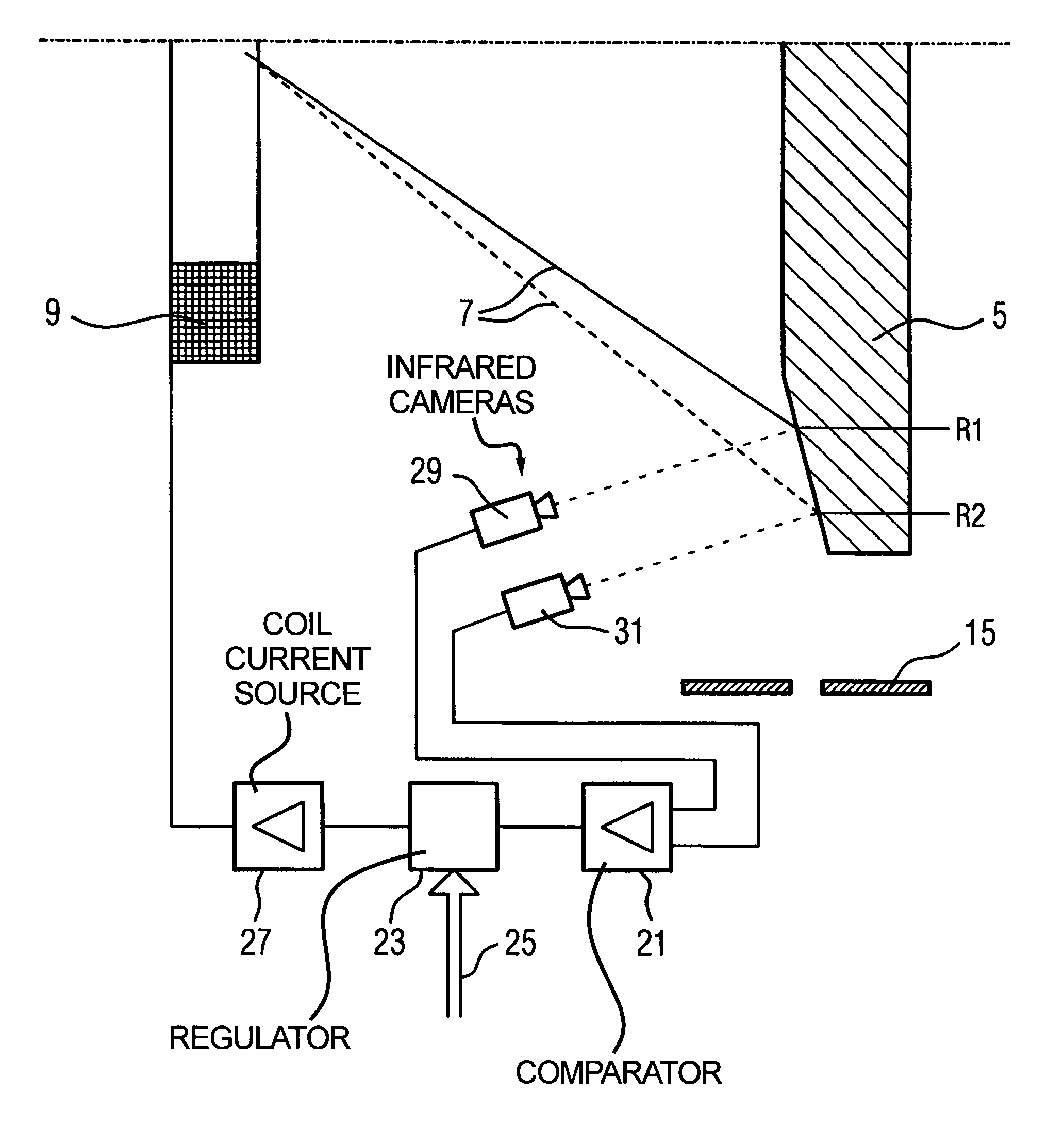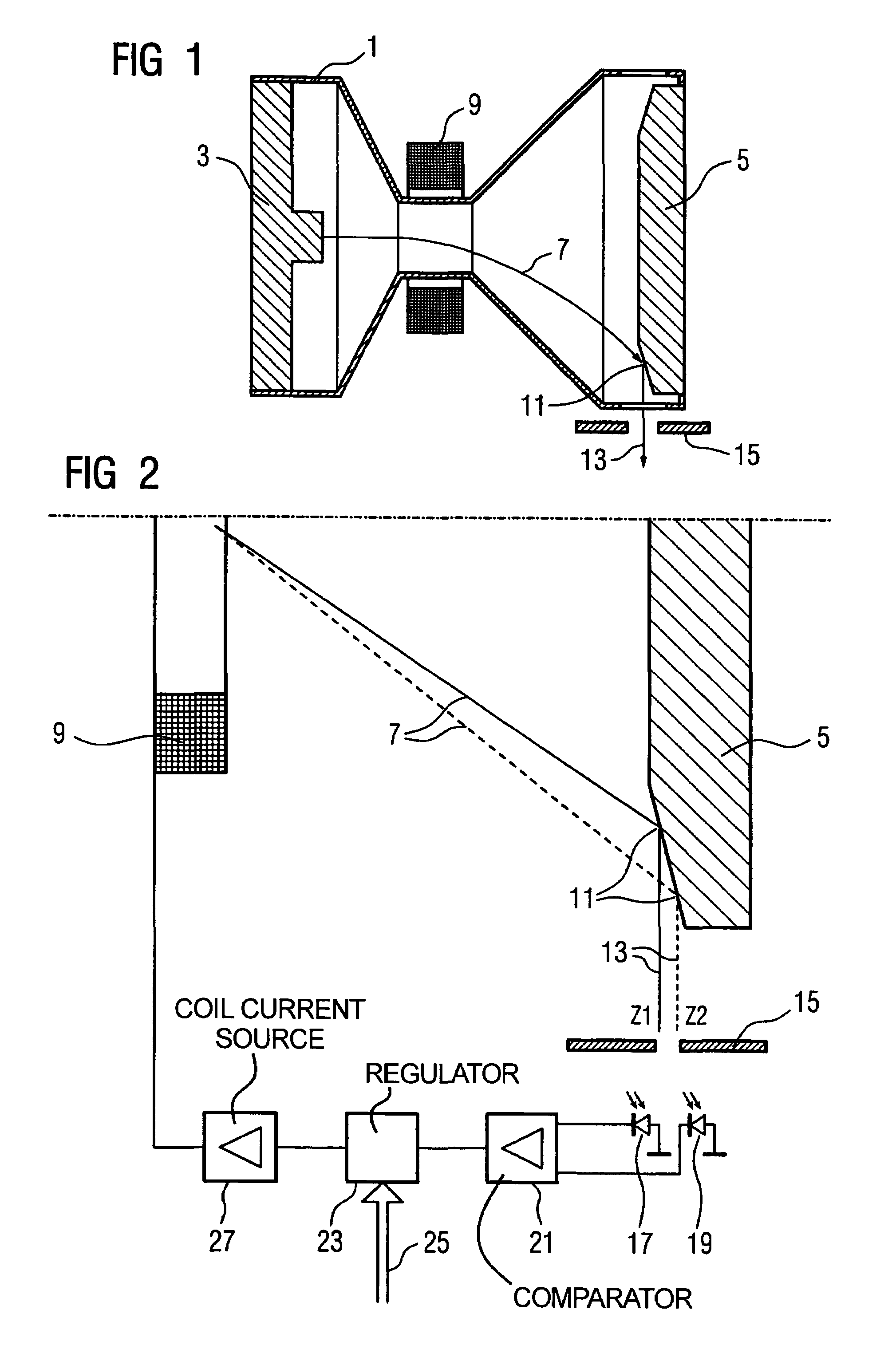Method and device for setting the focal spot position of an X-ray tube by regulation
a technology of x-ray tubes and focal spots, which is applied in the direction of x-ray tubes, radiation beam directing means, diagnostics, etc., can solve the problems of inducible capacity and disturbance, source of errors,
- Summary
- Abstract
- Description
- Claims
- Application Information
AI Technical Summary
Benefits of technology
Problems solved by technology
Method used
Image
Examples
Embodiment Construction
[0023]FIG. 1 schematically shows an arrangement for the regulation of the focal spot position of an X-ray tube 1. In the X-ray tube 1, electrons are emitted from the cathode 3 and are accelerated to the anode 5 due to the applied X-ray voltage. The electrons leave the cathode 3 already focused and thus form an electron beam 7. The electron beam 7 is deflected by deflection coils 9 and thus has a curved optical path. Although deflection coils 9 are common for deflecting the electron beam 7, deflection plates or other devices can also be used to create electromagnetic fields.
[0024]The electron beam 7 strikes the anode 5 in the focal spot 11. The position of the focal spot 11 depends on the strength of the deflection field created by the deflection coils 9 as well as the kinetic energy of the electrons caused by the X-ray voltage. The width of the electron beam 7 can be influenced by additional measures for focusing. When the anode 5 is struck, the electrons generate characteristic X-r...
PUM
 Login to View More
Login to View More Abstract
Description
Claims
Application Information
 Login to View More
Login to View More - R&D
- Intellectual Property
- Life Sciences
- Materials
- Tech Scout
- Unparalleled Data Quality
- Higher Quality Content
- 60% Fewer Hallucinations
Browse by: Latest US Patents, China's latest patents, Technical Efficacy Thesaurus, Application Domain, Technology Topic, Popular Technical Reports.
© 2025 PatSnap. All rights reserved.Legal|Privacy policy|Modern Slavery Act Transparency Statement|Sitemap|About US| Contact US: help@patsnap.com



